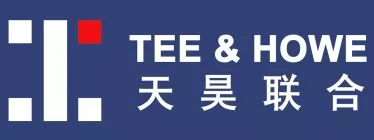On 1 February 2020, the CNIPA brought its revisions on examining computer-related inventions ("New AIRelated Revisions") into effect. These New AI-Related Revisions provide clearer guidance on determining whether a computer related invention is directed to patentable subject matter. They will be welcomed by the applicants as they should make patenting computer-related inventions easier, and the related prosecution smoother.
On 11 November 2019, the CNIPA published draft revisions to its patent examination guidelines for computer-related inventions ("New AI-Related Revisions"). Th ese were finalised on 31 December 2019, and became effective on 1 February 2020. In general, the changes follow the direction in the earlier revisions in 2017, reported in my article published in the August 2017 issue of the CIPA Journal. Specifically, as long as a claim has a technical feature like a computer-implemented step, a non-patentable subject matter objection should not be raised. Before looking at the New AI-Related Revisions, it is useful to comment on my experience prior to the 2017 revisions:
1. For inventions involving computer programs, business methods, or methods of treatment, particularly if the claims are only directed to such problematic matter, it was not unusual that the first office action only raised nonpatentable subject matter objections against such claims.
2. If a non-patentable subject matter objection was raised against a claim, it was typical that the novelty and/ or inventiveness of the claim was not examined by the Examiner. Because of this, it was possible that, subsequently, a novelty and/or obviousness objection could be raised after the non-patentable subject matter objection was resolved. In fact, I have one case in which the non-patentable subject matter objection was resolved after two office actions and a rejection decision, and only then obviousness objections were raised, in the third office action, after the case was returned from the Re-examination and Invalidation Department (previously known as the Patent Re-examination Board).
3. When raising the non-patentable subject matter objection against a claim, a Chinese examiner would allege a number of features in the claim to be not novel, either without providing any reference (like a generic computer processor, or a step of collecting data) or with a reference (like a specific step of comparing two parameters), while asserting that the remaining feature(s) were directed to nonpatentable subject matter.
4. Ironically, the CNIPA (SIPO back then) Chinese Patent Examination Guidelines (the Guidelines) emphasised full examination and procedure saving principles.
As a more general comment, my personal experience is that after the 2017 revisions I had not in fact received one first office action with only non-patentable subject matter objections. As mentioned above, the New AI-Related Revisions again stressed that as long as a claim has a technical feature like a computer-implemented step, such as a step involving computer hardware, whether that was special or conventional hardware, a non-patentable subject matter objection should not be raised, and the revisions further provide:
- further explanations of what would constitute a technical solution, that is, patentable subject matter;
- that when the office is examining novelty and inventiveness, all features should be taken into account;
- various examples illustrating what constitute a technical solution;
- specific guidance on drafting of the description and claims.
These are discussed below:
a. What constitutes a technical solution?
Th e New AI-Related Revisions stipulate the following:
- all features recited in a claim should be considered (emphasis added); and
- the presence of "technical means" in the claim is required. In order to be accepted as technical means, such "means" are required to solve a technical problem in order to obtain a technical effect in conformity with the laws of nature.
Comments: Fellow readers in Europe would be familiar with the concepts of a technical problem and a technical effect. An explanation may be required of "in conformity with the laws of nature". In general, this refers to technical means that could be carried out without subjective intervention of human beings. For example, if how a step is carried out requires a determination by an operator depending on the current working conditions, then this step would be considered as not in conformity with the laws of nature, and therefore not technical.
b. When examining novelty and inventiveness, all features should be taken into account
Although the above is specifically recited in the New AIRelated Revisions, this section also stipulates that "the technical features and algorithm or business rule and method features that have mutual supportive and interactive relations in function with the technical features should be considered as a whole", in which "mutual supportive and interactive relations in function" refers to the qualification of a technical means, that is, solving a technical problem to obtain technical effect. Th at is the features of the invention which interact with each other should be considered as a whole, and not separated into non-technical features and technical features. Th e following examples are recited:
- Application of algorithm features in a specific technical field.
- If it is required to adapt or improve the technical means to implement business rule and method features in a claim, then the business rule and method features usually have mutual supportive and interactive relations in function with technical features.
Comments: The following points could be useful:
- Although all features should be taken into account, this section in the New AI-Related Revisions imply that technical features not fulfilling the above requirements will be discounted when considering novelty and inventiveness. Th is follows the line of thinking in the Cubicin invalidation proceedings (please refer to my article published in the August 2014 issue of the CIPA Journal). This is further confirmed by the later examples in the New AI-Related Revisions, which will be discussed below.
- It is interesting to note that the New AI-Related Revisions specifically state that adaptation or improvement of a technical means due to implementation of business rule and method could be allowed. Th is could be a useful angle to obtain patent protection for a business rule or method, provided that there is a change to the technical means to implement such a business rule or method, notwithstanding that the technical means may not be a physical means.
- At present, the typical prosecution of computer-related inventions is that novelty and/or obviousness objections are raised in a first office action. When at least one distinguishing feature from the prior art is identified, the question of whether this distinguishing feature is technical would be raised in determining whether such should be discounted in the determination of novelty and/ or inventiveness. Compared to before the 2017 revisions, this could result in more efficient prosecution. At the very least, what happened to me in (2) above is now less likely to occur. Th e above prosecution practice is expected to continue under the New AI-Related Revisions.
c. Various examples illustrating what constitute a technical solution
The following are examples in the New AI-Related Revisions to illustrate the views from the CNIPA on what would be considered as patentable subject matter in China:
A method for training a convolutional neural network (CNN) model
The technical problem solved is to overcome the defect that the CNN model can only identify images of a fixed size. By employing different processing and training the image in different convolutional layers, the trained CNN model could identify the images to be identified of any size.
A method for using shared bicycles
The technical problem to be solved is how to precisely find the location of a ridable shared bicycle, and unlock that bicycle. By controlling and guiding the user's behavior of using the shared bicycle through computer programs executed on the terminal device and the server, which control the collection and calculation data like location information, authentication data and so on, the effects of matching the location of the ridable shared bicycle and permitting the use that bicycle could be achieved.
A method and device for communication between nodes of blockchain
The technical problem to be solved is how to prevent the blockchain service node from leaking user privacy data in an alliance chain network. Carrying the certificate authorization server (CA) certificate in the communication request and pre-configuring the CA trust list to determine whether a connection should be established could limit the target from connecting with the service node, thereby reducing data leakage and improving security.
Comments: It is interesting to note that the New AIRelated Revisions specifically include patentable examples related to business methods (the shared bicycles example) and blockchain. Th is could be encouraging as patenting of similar inventions may now be easier in China.
By contrast, non-patentable examples recited in the New AIRelated Revisions are:
- a method for establishing a mathematical model;
- a method of rebating for spending; and
- a method for analyzing an economic sentiment index based on electricity consumption characteristics.
The New AI-Related Revisions also includes four examples on determining inventiveness. In the last example of a method for visualizing evolution of dynamic views, it was determined that the claim differs from prior art by a rule of the classification of the emotion of the user, while there is no change in the technical means from the prior art for coloring the corresponding classification. This is considered to have no technical contribution, and therefore the claim is obvious.
d. Requirements on drafting of description and claims
The New AI-Related Revisions emphasize that the description should:
- describe how the technical features and the features of the algorithm or business rule or method that have mutual supportive and interactive relations in function with the technical features, and thus produce advantageous effects; and
- clearly and objectively describe advantageous effects of the invention as compared with the prior art.
Comments: The above illustrates the importance of positively stating the specific function and associated advantageous effects achieved by a feature in the description. This may not be welcomed by US practitioners, considering that such recitations would narrow the scope of protection. However, if this is not done, patent grant may not be achieved at all, i.e. the scope of protection could not exist at all, at least in China.
The content of this article is intended to provide a general guide to the subject matter. Specialist advice should be sought about your specific circumstances.

